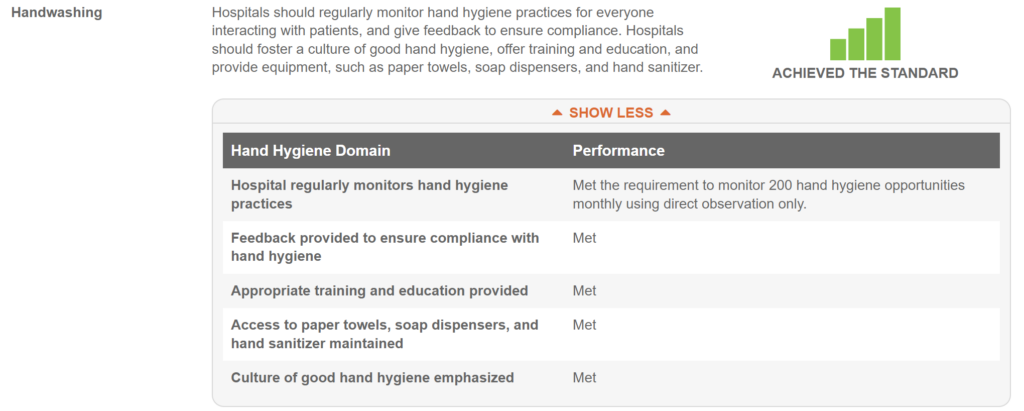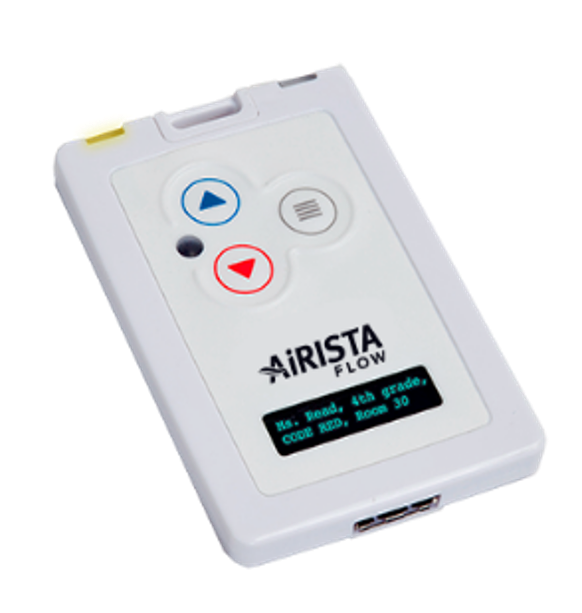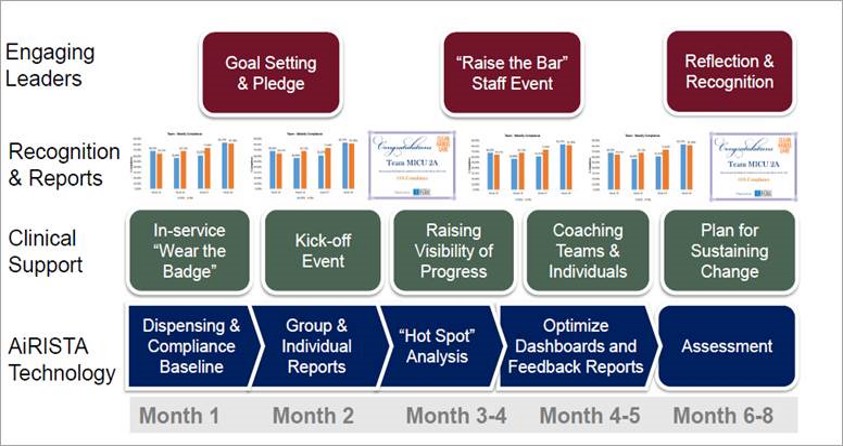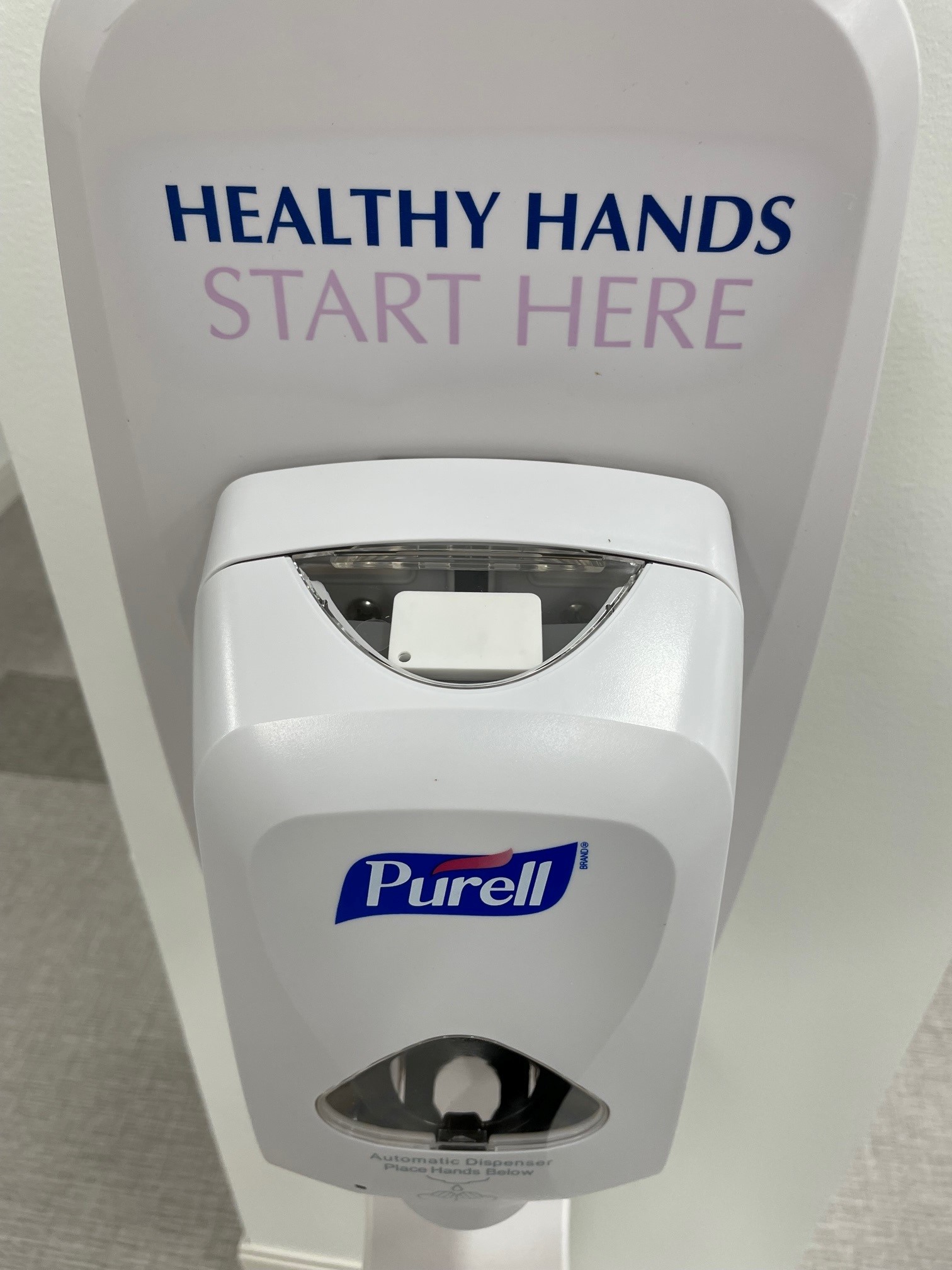Hospitals that want to improve their Leapfrog scores turn to automated accountability.
The Leapfrog score is a letter grade assigned twice a year to nearly 3,000 general hospitals. The score measures patient safety across 22 evidence-based measures that address preventable errors, injuries and infections. Results are public and can be searched here. The following is an example of a hospital’s hand hygiene score.

Traditionally hospitals have used direct observation for a sense of hand hygiene compliance. As expected, compliance is artificially inflated up to 3x when clinicians know they are being observed. To help understand the true rate of compliance, hospitals turn to automated accounting techniques using real time location services (RTLS) solutions. Using RTLS solutions, systems record when a dispense occurs, who to attribute the dispense to, and the location using wireless technology. The RTLS architecture typically requires a sensor on the dispenser, a tag worn by the staff, and wireless infrastructure to determine the location.
4 attributes of a comprehensive hand hygiene solution.
Hand hygiene monitoring solutions vary by vendor and provide different levels of insight and accountability. Here are four questions you should ask when evaluating solutions.
1. Is the solution dispenser agnostic?
- Determine if the solution supports all pump dispensers regardless of the manufacturer and pump mechanism.
- Ensure both alcohol and soap washing stands are supported.
- Alerts should be provided when the dispensers near empty.
2. Does the solution support wash protocols regardless of department or employee role?
- Protocols vary by unit and job function. Each requires hygiene guidelines specific to that role.
- In the case of soap stations, solutions like AiRISTA’s can also determine the time spent washing.
3. Does the solution provide a reminder to clinician when they miss a washing opportunity?
- Its easy to forget to wash, so AiRISTA’s B4n personnel tag provides a gentle reminder of a missed opportunity with a message to the tag’s display and flashing LEDs.
- The B4n is also used as a staff safety device for delivering SOS events when staff are in duress, identifying the individual and their location. Through customer defined rules, responders receive the alert on their B4n tags for a coordinated and documented response.

4. Does the solution provide comprehensive reporting including drill down reports?
- Use gamification techniques based on results
- Reports provide the basis for fact based conversations
- ID troublesome trends early with insight to the underlying causes
Improving hand hygiene compliance is hard because changing peoples’ behavior is hard. Automating accountability is only one part of a multiprong approach that should include the following.
- Knowledge & education
- Individual awareness
- Social influence
- Targeted feedback
- Positive Reinforcement
- Leadership commitment

Data from AiRISTA’s automated hand hygiene solution establishes a base of current compliance, encourages improvement with reminders of missed washing opportunities, and provides the data to monitor progress and share results.
In summary, enhancing hand hygiene compliance in hospitals is a multifaceted endeavor that requires more than just automated solutions. AiRISTA’s RTLS hand hygiene solution stands out with its dispenser-agnostic capabilities, adherence to varied wash protocols, proactive reminders for clinicians, and comprehensive reporting tools. This advanced system not only automates accountability but also fosters a culture of safety and continuous improvement. If you’re looking to elevate your hospital’s hand hygiene standards and improve your Leapfrog score, reach out to AiRISTA today.





